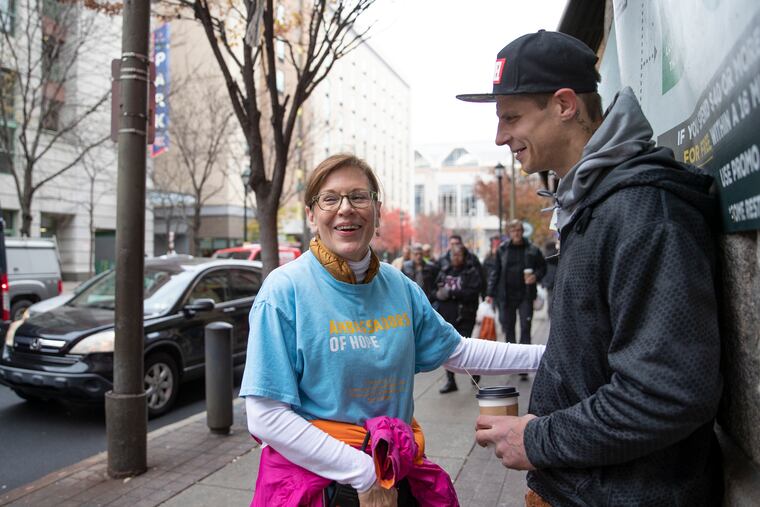Center City alone can’t solve homelessness | Editorial
A survey by the Center City District finds perceptions of the public quality of life on the streets of Center City have declined as the homeless population has dramatically increased. A program the district recently launched has connected 190 street people with services. But is it enough?

According to a new quarterly report by the Center City District, the number of homeless people downtown has increased by 57% since 2015. People that police count sleeping outside overnight now average 494 per night. Further, daytime sidewalk counts have increased even more, by 136%, and a count of panhandlers now average 59 each day, another large increase since four years ago.
This obviously is of concern for an organization that is at the forefront of championing the growth and commercial viability of the heart of the city ― including business development, job creation, and tourism.
A survey the CCD conducted in 2019 garnered responses from 5,017 business owners, residents, and visitors; while 76% of respondents said they feel safe all or most of the time in Center City, 23% said they sometimes or often feel unsafe. This is an increase from five years ago and the report notes that panhandlers and people sleeping on the sidewalks are key factors in this decline.
But while people living on the street are most visible in Center City, they also can be found in South and North Philly, as well as in Kensington and other neighborhoods; this citywide crisis is driven largely by a shortage of safe and affordable places for economically or otherwise vulnerable human beings to live. And simply linking some of these people with services, while important, can’t address the systemic poverty and unemployment-related forces that also drive homelessness in Philadelphia, the poorest big city in America.
» READ MORE: Mail for the homeless: A local lifeline for people off the grid
» READ MORE: From panhandling to a paycheck: How day labor can provide opportunity to Philly’s homeless
In the past, efforts to impact these quality of life issues have included the police and city outreach workers, often working separately. The city as a whole and Center City District have both evolved in their approach to solutions.
Since April, a pilot partnership of the district, the police, and Project HOME has connected 190 Center City individuals with services. Characterized as a “two-handed solution,” the Ambassadors of Hope program is a pragmatic and practical response to the five years of growth in the homeless population.
Philly police officers, as well as trained Project HOME and district personnel, serve on the teams that interact with homeless people; building relationships — the key to Project HOME’s own longstanding efforts — is the focus. No homeless have been arrested as part of the program as of yet; clearly, the message has been received that it is neither desirable nor feasible for Philly to arrest its way out of the economic and mental health issues involved in chronic homelessness.
It’s also worth noting that survey respondents put reducing homelessness third, behind improving the schools and reducing the wage tax, as among the ways to enhance Center City’s commercial viability. Another recent district report noted that while recent job growth has been robust, most of that employment increase has come from lower-wage sectors such as food and beverages.
It’s not realistic to expect solutions to Philadelphia’s economic woes to come from a single sector of the city, any more than it would be realistic to expect downtown to solve the citywide problem of homelessness. But the interdisciplinary Ambassadors of Hope offer a worthwhile approach.